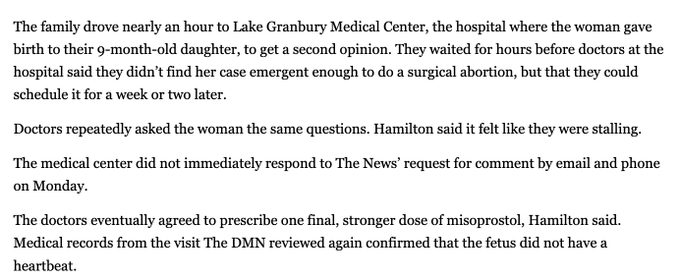This morning, I called a branch of Surepoint, the free-standing emergency center where this Texas couple first sought miscarriage care. The receptionist told me none of their locations perform any surgeries—not for miscarriage, not for anything more than stitches. The
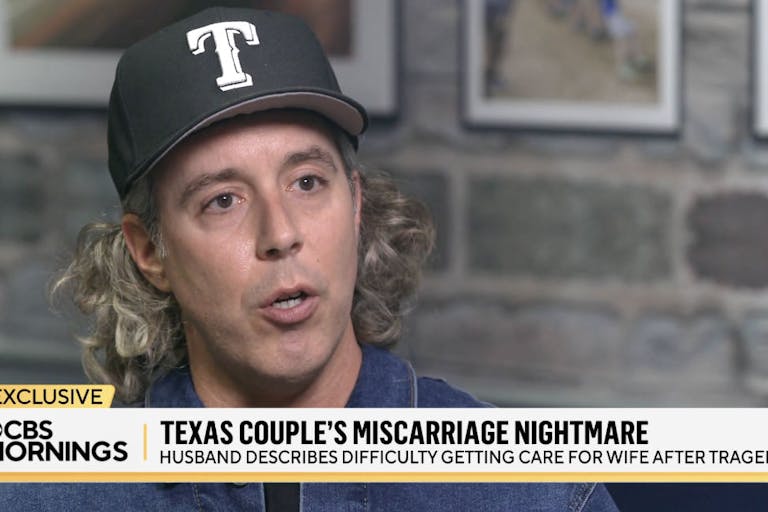
5 facts show why pro-life laws aren’t to blame for Texas radio host’s wife’s miscarriage trauma
5 facts show why pro-life laws aren’t to blame for Texas radio host’s wife’s miscarriage trauma
Texas radio host Ryan Hamilton is sharing the story of his wife’s miscarriage — and blaming the state’s pro-life laws for the trauma he says she experienced. Yet not long after this story was promoted by the media, readers and social media commenters appeared to find holes in his story.
In reality, nothing about the state’s law protecting preborn children from being intentionally killed through abortion stood in the way of his wife’s miscarriage treatment — and surprisingly, the details of his story prove it. It appears that this miscarriage account, while painful and traumatic, demonstrates that the treatment Hamilton’s wife received was within the standard of care for miscarriage across the U.S.
Here are six facts to consider about this story:
FACT #1: The baby was confirmed deceased by an ultrasound — a natural miscarriage. Texas abortion law allows miscarriage treatment, which Hamiton’s wife received.
Tragically, Hamilton’s wife miscarried their baby at 13 weeks, according to his interview with CBS News, which reported that his wife went to Surepoint Emergency Center in North Texas for help. It is unclear if Hamilton and his wife called their OB/GYN for advice on what to do before heading to Surepoint, which does not list miscarriage care or surgery of any kind among its available services. However, it would seem that the reasonable first course of action would be to make a call to one’s obstetrician.
And it didn’t take long for some social media users to notice something wasn’t quite right:
Hamilton responded to the above tweet from John McCormack, saying, “Surepoint simply stated, ‘if you want a D&C, you’ll have to go somewhere else’, without providing any other information, or referring us elsewhere. For all we knew, they were simply refusing to do it. They didn’t tell us why. They then suggested Misoprostol. If they would have provided us with the information you just shared, maybe it could have been less of a nightmare. When we returned to Surepoint for a follow-up, which they suggested, the doctor on call proceeded to DENY us the originally suggested refill, citing ‘The current stance’. The third trip, to the next hospital, resulted in them denying a D&C (which you acknowledged). So, when the reporting says we were denied miscarriage care 3 times, that is accurate.”
It is unclear why Hamilton didn’t ask the doctors why they wouldn’t carry out a D&C, but he does appear to have made the assumption that this was a denial of care based on pro-life laws — perhaps this assumption is a result of the media spin that women are being denied miscarriage care when they aren’t.
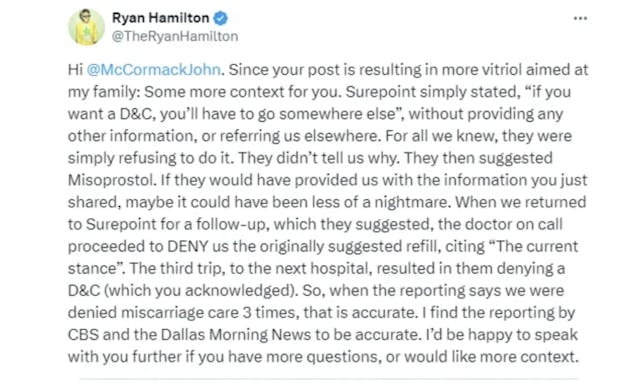
Hamilton’s wife was never denied care and never turned away. After emergency center doctors — not OB/GYNs — confirmed that the baby no longer had a heartbeat, they allegedly prescribed misoprostol to Hamilton’s wife, which CBS said it confirmed via the wife’s medical records. Misoprostol has various medical uses, including as a miscarriage treatment. (It is also the second drug used in the abortion pill regimen.) It causes contractions which expel the baby’s body. In other words, doctors prescribed a miscarriage treatment to Hamilton’s wife on her first visit to Surepoint Emergency Center.
Hamilton said on X, “The doctor gave her a medication that would move the process along, and sent her home. Where, apparently we would be handling it ourselves. We were told it might take a couple of attempts before it worked. I’ll let you decide how you feel about that.”
While Hamilton was clearly not pleased with this course of action, it is standard procedure for most women to be sent home to complete a miscarriage if she’s in no immediate danger. Nothing that happened with Hamilton’s wife’s treatment was abnormal at this point.
According to Drugs.com, the pro-abortion American College of Obstetricians and Gynecologists has recommendations on how to handle miscarriages using misoprostol:
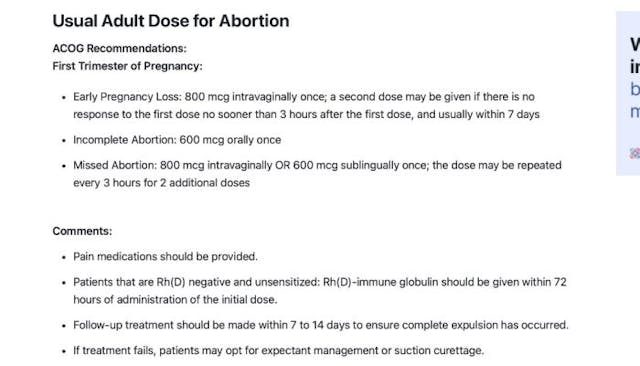
Based on Hamiton’s claims, it appears that the doctors were in line with prescribing misoprostol according to these ACOG guidelines. Pain was to be expected, and the possible failure of treatment is noted here, after which “patients may opt for expectant management or suction curettage [D&C].” To be discussed in further detail later in this article, a hospital Hamilton and his wife visited did offer to schedule a D&C after the two doses of misoprostol failed to resolve the miscarriage.
Side note: Sending women home alone with the abortion pill regimen (which, again, includes the same drug Hamilton’s wife received — misoprostol), or mailing them the abortion pill to carry out a DIY abortion at home by themselves without a doctor’s supervision, is currently promoted by major media outlets and abortion advocates as “reproductive freedom.”
Yet in the case of Hamilton’s wife’s miscarriage, he portrayed the prescribing of a drug to induce labor at home as negligence, and though it is standard care for miscarriage, is acting as if she were denied that care.
FACT #2: Texas law is clear about what “abortion” means, and it’s not a natural miscarriage.
When a woman miscarries at 13 weeks, the end of the first trimester, she will often be given three choices. According to the pro-abortion ACOG, “There are three main treatments for early pregnancy loss. The goal for all three is to remove any pregnancy tissue left in the uterus. There are two nonsurgical treatments: expectant management (letting the tissue pass on its own) and medication. The third treatment is a surgical procedure called dilation and curettage (also known as D&C or suction curettage).”
What a woman does not need is an “induced abortion,” which is different than a natural miscarriage, which is often labeled as “spontaneous abortion” by medical professionals (which can have the effect of either confusing or upsetting many women, and confusing the public as well). If the woman’s body does not begin the process of expelling the baby on its own — a process that may take weeks — it is called a missed miscarriage.
An “induced abortion,” however, is when the preborn child is directly and intentionally killed before delivery — and this is what is prohibited by Texas law, which defines “abortion” as (emphasis added):
… the act of using or prescribing an instrument, a drug, a medicine, or any other substance, device, or means with the intent to cause the death of an unborn child of a woman known to be pregnant. The term does not include birth control devices or oral contraceptives. An act is not an abortion if the act is done with the intent to:
(A) save the life or preserve the health of an unborn child;
(B) remove a dead, unborn child whose death was caused by spontaneous abortion; or
(C) remove an ectopic pregnancy.
Texas’ Human Life Protection Act additionally states that a person “may not knowingly perform, induce, or attempt an abortion” unless that person is a “licensed physician,” who, “in the exercise of reasonable medical judgment,” performs an abortion (see above for that definition according to the law) on a woman who has a “life-threatening physical condition aggravated by, caused by, or arising from a pregnancy that places the female at risk of death or poses a serious risk of substantial impairment of a major bodily function unless the abortion is performed or induced….”
Hamilton’s child had already died, and medical professionals helping his wife complete the miscarriage was not in violation of any law, and they did provide her with standard care.
The first option a woman may be given for miscarriage care is to wait for the miscarriage to complete naturally, which the Miscarriage Association explains can take weeks. The second option is to take “medication” to cause contractions to expel the baby’s body. If unsuccessful, it may then be necessary for a woman to undergo the third option: a D&C. A D&C procedure to removes the baby by suction and scraping, which has the potential to cause damage to the uterus, and scar tissue may affect future pregnancies. This surgery was not an option at the Surepoint Emergency Center, should be the last option offered according to ACOG, and Hamilton’s wife would have had to see her OB/GYN or go to a hospital for this procedure.
It appears Hamilton’s wife, according to CBS, was given misoprostol, which is the standard of care. According to a 2021 study published in the NIH National Library of Medicine, “In most cases, routine, ‘automatic’ surgical treatment of early miscarriage is no longer considered the standard of care. Both expectant management and medical (drug) treatment are safe alternatives to curettage.” Sometimes practitioners may prescribe other drugs to treat miscarriage instead of misoprostol.
FACT #3: Doctors had prescribed his wife two doses of misoprostol, which failed. When a doctor refused to prescribe a third dose, Hamilton blamed pro-life laws. This is nonsensical.
Hamilton explained that the first dose of misoprostol didn’t work “after a long and painful night,” so his wife took a second dose, which also failed and caused “pain” and “bleeding” — a known possible side effect of misoprostol. Hamilton said his wife returned to the emergency center, where he claims a different doctor told her “Due to the current stance, I cannot prescribe this medicine for you.'” However, in a tweet recalling the same conversation, Hamilton said he overheard the doctor yell, “I’m not giving her a pill so she can go home and have an ab*rtion!” before telling them, “Considering the current stance. I’m not going to prescribe you this pill.” Hamilton does not offer a clear explanation as to why a third dose of misoprostol was not given at this time. In fact, CBS News reported, “The only explanation Hamilton could think of was that this doctor thought the current state laws in Texas prevented it” (emphasis added).
It appears Hamilton came to the conclusion that pro-life laws were to blame — all on his own.
But this makes no sense at all, given the fact that the same emergency facility had already prescribed her the drug, and she’d taken it twice.
My heart is broken💔: As friends & family know, my wife was pregnant with our 2nd child, & about to begin her 2nd trimester. A few days ago she had severe pains, & bleeding, and had to go to the emergency room. There, it was discovered that our baby no longer had a heartbeat.
Interestingly, Pfizer states that a woman can overdose on misoprostol with signs including sedation, tremor, convulsions, shortness of breath, abdominal pain, diarrhea, fever, palpitations, low blood pressure, and slower than normal heart rate. There has been at least one case of maternal death linked to misoprostol, in which an adolescent self-administered the drug to induce an abortion and developed upper gastrointestinal bleeding which led to multi-organ failure, esophageal necrosis, multiple episodes of cardiac arrest, and death.
“You start thinking about the women that have to drive across state lines. We’ve heard these stories. And you — just as a husband, you go, ‘Is that what we’re gonna have to do?'” Hamilton said. “You want to panic, but you can’t. What are we going to do? Leave the baby inside her so she can get an infection? Get sepsis that can kill her?”
Again, the doctors had already given her a drug, which failed to work. No one was just sitting around “waiting” — and yet, doctors often offer women the option of waiting weeks for a miscarriage to complete on its own. A woman is not necessarily at immediate risk of infection upon learning that her preborn child has died.
There was a second facility, an actual hospital, the couple visited where doctors declined to perform a D&C but were willing to schedule one. That hospital told CBS News: “We provide training and education to our employed providers to ensure they understand any changes to
FACT #4: They went to a hospital, where doctors said it wasn’t an emergency and offered to schedule a D&C for later. They then gave Hamilton’s wife another, higher dose of misoprostol.
Dallas News reported that the couple then drove to a hospital — Lake Granbury Medical Center — where they had given birth to their first child and where it was confirmed that their second baby had died. Doctors there told the couple that the situation wasn’t an emergency and offered to schedule a D&C at some point over the next two weeks. (A D&C to remove the remains of a deceased baby is 100% legal in Texas and every state.)
Instead, what did the doctors at this hospital do? Well, according to CBS News, “The doctors opted to give Hamilton’s wife a higher dose of misoprostol and sent her home for a third time.” (emphasis added)
Clearly, the hospital in this story knew the protocol for miscarriage management. You know who didn’t know? Hamilton and his wife. And now, because Hamilton is ignorant of medical protocol for miscarriage treatment (and perhaps CBS News is as well), he and the media are blaming a pro-life law that wouldn’t have changed or affected this treatment in any way.
If this isn’t a perfect example of how the mainstream media lies in order to promote a pro-abortion agenda, nothing is.
Hamilton’s wife took the third, stronger dose of misoprostol. And not long after, Hamilton found his wife unconscious in the bathroom surrounded by blood. Research states too much misoprostol can cause shortness of breath, low blood pressure, and slow heart rate. A drop in blood pressure and a slowed heart rate can cause fainting. In addition, heavy or excessive bleeding is a known possible side effect of misoprostol (even when used with mifepristone in the abortion pill regimen) and side effects are thought to be related to the dose given.
Hamilton then brought his wife to the emergency room.
According to CBS, the ER doctors there declared that “the third round of misoprostol was successful.” Hamilton’s wife stabilized and was sent home. The miscarriage was complete, and the pain and heavy bleeding were signs that misoprostol had done its job. This is an effect that misoprostol, even within the so-called “safe” abortion pill regimen, can have.
FACT #5: Misoprostol isn’t the “abortion pill,” and isn’t regulated like the abortion pill. This entire experience had nothing to do with induced abortion or Texas law.
What happened to Hamilton’s wife has nothing to do with abortion or abortion laws.
Misoprostol is not “the” abortion pill, though it is the second drug in the abortion pill regimen. The title of “the abortion pill” belongs to mifepristone, which was approved for use in the U.S. in 2000. In the abortion pill regimen, misoprostol is given with mifepristone to induce contractions after mifepristone blocks the naturally occurring pregnancy hormone progesterone. Mifepristone’s job is to starve the preborn child of nutrients by blocking an important pregnancy-sustaining hormone, and misoprostol’s job is to ensure contractions begin to expel the preborn baby.
The doctors who treated Hamilton’s wife at the original emergency center were likely not “certified prescribers” of mifepristone, the abortion pill that is restricted and regulated under the FDA’s safety protocol (REMS). Being a “certified prescriber” is required to obtain mifepristone — and therefore, the emergency doctors likely didn’t have access to that drug and couldn’t have prescribed it, regardless of the situation. However, some physicians who are certified prescribers have been using mifepristone off-label with misoprostol in an attempted “workaround” to the REMS, and in an attempt to get the regimen approved for use during miscarriage.
Misoprostol isn’t regulated the same way as mifepristone — therefore, assuming that a doctor was claiming that “the current stance” of a Texas abortion law prohibited him or her from prescribing misoprostol for a miscarriage is… well, quite a leap of logic. After all, it had already been prescribed to Hamilton’s wife by a different doctor.
Hamilton’s experience isn’t even about induced abortion. That much is clear. But the media, and Hamilton, have chosen to turn it into a narrative about induced abortion.
CONSIDER THIS: The pain and bleeding Hamilton’s wife experienced delivering a dead child at home after miscarriage is the same pain and bleeding that women who take the abortion pill regimen often endure. Alone.
Hamilton was upset that his wife was given a drug to induce contractions so she would give birth to her deceased child at home. Hamilton was also upset that it was not immediately effective — though they had been warned it might not be — and that they were sent home to handle it alone.
MSNBC analyst Tim Miller also claims it’s horrible to make a woman take a pill to complete a miscarriage at home… and yet that same MSNBC analyst is clearly in favor of abortion and probably supports the abortion pill, which utilizes one of the same drugs that this woman took. Miller tweeted, “This is f*cking madness. In Texas, ‘Pro-life’ now means women being forced to exhume their dead, wanted baby out of their own body with a pill and the doctors only intervene if the massive blood they lose turns brown.”
This is fucking madness. In Texas, “Pro-life” now means women being forced to exhume their dead, wanted baby out of their own body with a pill and the doctors only intervene if the massive blood they lose turns brown. dallasnews.com/news/public-he…
This is exactly what happens when a woman is sent home with the abortion pill or has it delivered to her home.
Why is this situation presented as an awful thing to do in the case of a natural miscarriage, yet promoted in the case of an induced abortion on a yet-living preborn child? A woman taking the abortion pill regimen at home will have a similar experience to Hamilton’s wife. Yet abortion advocates want women to be able to keep the abortion pill regimen (mifepristone and misoprostol) stocked in their medicine cabinet, order it online, or get it via a telehealth appointment in which they don’t undergo a medical exam before taking the drugs.
One woman explained, “When the drugs [abortion pill regimen, mifepristone and misoprostol] took effect, the pain was beyond anything I’d ever experienced or imagined. I bled profusely, pools of blood down my legs and onto the floor. Pain relievers and heating packs did nothing to ease the pain. My body shook violently. I suffered nausea and diarrhea and was sweating uncontrollably. Then, I passed the amniotic sac with my tiny child inside.” (Nausea and diarrhea are listed as “common” side effects of misoprostol.)
After taking misoprostol, a woman named Elizabeth said, “There was so much pain and blood I thought I might die.”
Hamilton’s wife was likely traumatized just as these women were, but what happened to each of them is celebrated as freedom and as a right. Hamilton’s wife was given misoprostol. She was not denied miscarriage care. It was, in fact, the misoprostol that likely caused the pain and trauma her body went through because it was meant to speed up the miscarriage process.
Pro-abortion media and advocates are using this tragic loss of a child to change the narrative and push for the legalized intentional killing of children. They know and expect heavy bleeding and intense pain to happen to women who take the abortion pill and they call it “safe,” but they are exploiting Hamilton’s tragic loss of a child, turning it into an attack on pro-life laws that had nothing to do with his child’s death or his wife’s experience.
Editor’s Note, 6/6/24: Further details regarding this story, including tweets, were added for clarification.
Editor’s Note, 6/6/24: A section from Drugs.com was added along with commentary after original publication.
Live Action News is pro-life news and commentary from a pro-life perspective.
Contact editor@liveaction.org for questions, corrections, or if you are seeking permission to reprint any Live Action News content.
Guest Articles: To submit a guest article to Live Action News, email editor@liveaction.org with an attached Word document of 800-1000 words. Please also attach any photos relevant to your submission if applicable. If your submission is accepted for publication, you will be notified within three weeks. Guest articles are not compensated (see our Open License Agreement). Thank you for your interest in Live Action News!
Read Next
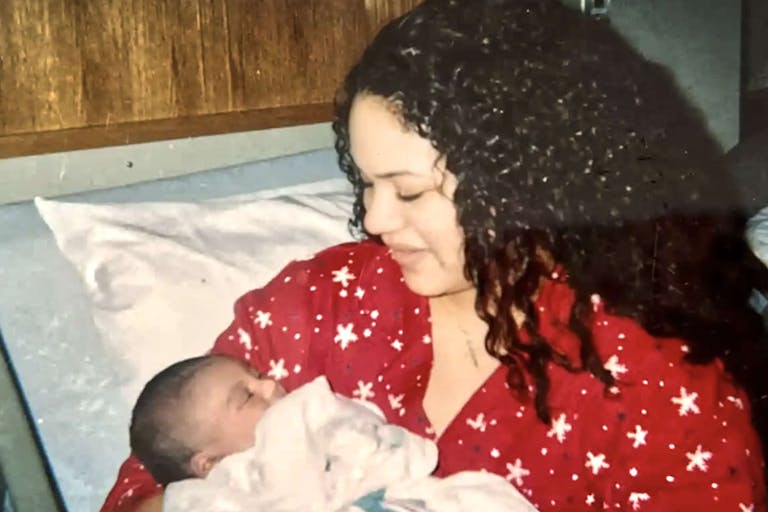
She chose life for her children, no matter what the future might hold
Melina Nicole
·More In Analysis

Analysis
Great-grandmother charged with attempted murder of disabled teen
Cassy Cooke
·
Politics
New Jersey governor promoted abortion on Christmas Eve
Cassy Cooke
·
Analysis
Florida Supreme Court rules sperm donor can seek parental rights
Cassy Cooke
·
Analysis
Fact Check: Woman says she was denied treatment as baby 'poisoned her from inside out'
Nancy Flanders
·
Newsbreak
Pro-life leaders encourage pastors to preach against abortion
Angeline Tan
·More From Nancy Flanders

Politics
'Opt-in' vs 'opt-out': Why abortion training is not 'essential' for medical residents
Nancy Flanders
·
Pop Culture
Political commentator's heartbreaking loss exposes pain of IVF
Nancy Flanders
·
Politics
New Archbishop of Canterbury warns of danger in legalizing assisted suicide
Nancy Flanders
·
Politics
Judge approves class-action settlement requiring Aetna to cover IVF for same sex couples
Nancy Flanders
·
Abortion Pill
Kentucky woman arrested, charged with fetal homicide
Nancy Flanders
·



